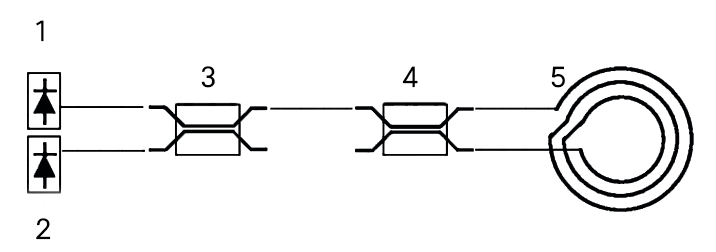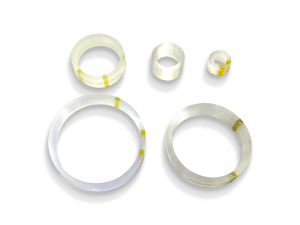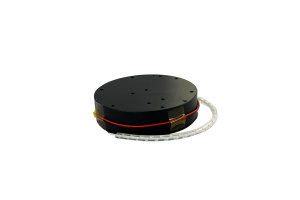What is Inertial Navigation?
Fundamentals of Inertial Navigation
The fundamental principles of inertial navigation are akin to those of other navigation methods. It relies on acquiring key information, including the initial position, initial orientation, the direction and orientation of motion at each moment, and progressively integrating these data (analogous to mathematical integration operations) to precisely determine navigation parameters, such as orientation and position.
The Role of Sensors in Inertial Navigation
To obtain the current orientation (attitude) and position information of a moving object, inertial navigation systems employ a set of critical sensors, primarily consisting of accelerometers and gyroscopes. These sensors measure angular velocity and acceleration of the carrier in an inertial reference frame. The data is then integrated and processed over time to derive velocity and relative position information. Subsequently, this information is transformed into the navigation coordinate system, in conjunction with the initial position data, culminating in the determination of the current location of the carrier.
Operation Principles of Inertial Navigation Systems
Inertial navigation systems operate as self-contained, internal closed-loop navigation systems. They do not rely on real-time external data updates to correct errors during the carrier's motion. As such, a single inertial navigation system is suitable for short-duration navigation tasks. For long-duration operations, it must be combined with other navigation methods, such as satellite-based navigation systems, to periodically correct the accumulated internal errors.
The Concealability of Inertial Navigation
In modern navigation technologies, including celestial navigation, satellite navigation, and radio navigation, inertial navigation stands out as autonomous. It neither emits signals to the external environment nor depends on celestial objects or external signals. Consequently, inertial navigation systems offer the highest level of concealability, making them ideal for applications requiring the utmost confidentiality.
Official Definition of Inertial Navigation
Inertial Navigation System (INS) is a navigation parameter estimation system that employs gyroscopes and accelerometers as sensors. The system, based on the output of gyroscopes, establishes a navigation coordinate system while utilizing the output of accelerometers to compute the velocity and position of the carrier in the navigation coordinate system.
Applications of Inertial Navigation
Inertial technology has found wide-ranging applications in diverse domains, including aerospace, aviation, maritime, petroleum exploration, geodesy, oceanographic surveys, geological drilling, robotics, and railway systems. With the advent of advanced inertial sensors, inertial technology has extended its utility to the automotive industry and medical electronic devices, among other fields. This expanding scope of applications underscores the increasingly pivotal role of inertial navigation in providing high-precision navigation and positioning capabilities for a multitude of applications.
The Core Component of Inertial Guidance:Fiber Optic Gyroscope
Introduction to Fiber Optic Gyroscopes
Inertial navigation systems heavily rely on the accuracy and precision of their core components. One such component that has significantly enhanced the capabilities of these systems is the Fiber Optic Gyroscope (FOG). FOG is a critical sensor that plays a pivotal role in measuring the carrier's angular velocity with remarkable accuracy.
Fiber Optic Gyroscope Operation
FOGs operate on the principle of Sagnac effect, which involves splitting a laser beam into two separate paths, allowing it to travel in opposite directions along a coiled fiber optic loop. When the carrier, embedded with the FOG, rotates, the difference in travel time between the two beams is proportional to the angular velocity of the carrier's rotation. This time delay, known as the Sagnac phase shift, is then precisely measured, enabling the FOG to provide accurate data regarding the carrier's rotation.
The principle of a fiber optic gyroscope involves emitting a beam of light from a photodetector. This light beam passes through a coupler, entering from one end and exiting from another. It then travels through an optical loop. Two beams of light, coming from different directions, enter the loop and complete a coherent superposition after circling around. The returning light re-enters a light-emitting diode (LED), which is used to detect its intensity. While the principle of a fiber optic gyroscope may seem straightforward, the most significant challenge lies in eliminating factors that affect the optical path length of the two light beams. This is one of the most critical issues faced in the development of fiber optic gyroscopes.
1:superluminescent diode 2:photodetector diode
3.light source coupler 4.fiber ring coupler 5.optical fiber ring
Advantages of Fiber Optic Gyroscopes
FOGs offer several advantages that make them invaluable in inertial navigation systems. They are renowned for their exceptional accuracy, reliability, and durability. Unlike mechanical gyros, FOGs have no moving parts, reducing the risk of wear and tear. Additionally, they are resistant to shock and vibration, making them ideal for demanding environments such as aerospace and defense applications.
Integration of Fiber Optic Gyroscopes in Inertial Navigation
Inertial navigation systems are increasingly incorporating FOGs due to their high precision and reliability. These gyroscopes provide the crucial angular velocity measurements required for the accurate determination of orientation and position. By integrating FOGs into the existing inertial navigation systems, operators can benefit from improved navigation accuracy, especially in situations where extreme precision is necessary.
Applications of Fiber Optic Gyroscopes in Inertial Navigation
The inclusion of FOGs has expanded the applications of inertial navigation systems across various domains. In aerospace and aviation, FOG-equipped systems offer precise navigation solutions for aircraft, drones, and spacecraft. They are also extensively used in maritime navigation, geological surveys, and advanced robotics, enabling these systems to operate with enhanced performance and reliability.
Different Structural Variants of Fiber Optic Gyroscopes
Fiber optic gyroscopes come in various structural configurations, with the predominant one currently entering the realm of engineering is the closed-loop polarization-maintaining fiber optic gyroscope. At the core of this gyroscope is the polarization-maintaining fiber loop, comprising polarization-maintaining fibers and a precisely designed framework. The construction of this loop involves a fourfold symmetric winding method, supplemented by a unique sealing gel to form a solid-state fiber loop coil.
Key Features of Polarization-Maintaining Fiber Optic Gyro Coil
▶Unique Framework Design: The gyroscope loops feature a distinctive framework design that accommodates various types of polarization-maintaining fibers with ease.
▶Fourfold Symmetric Winding Technique: The fourfold symmetric winding technique minimizes the Shupe effect, ensuring precise and reliable measurements.
▶Advanced Sealing Gel Material: The employment of advanced sealing gel materials, combined with a unique curing technique, enhances the resistance to vibrations, making these gyroscope loops ideal for applications in demanding environments.
▶High Temperature Coherence Stability: The gyroscope loops exhibit high temperature coherence stability, ensuring accuracy even in varying thermal conditions.
▶Simplified Lightweight Framework: The gyroscope loops are engineered with a straightforward yet lightweight framework, guaranteeing high processing precision.
▶Consistent Winding Process: The winding process remains stable, adapting to the requirements of various precision fiber optic gyroscopes.
Reference
Groves, P. D. (2008). Introduction to Inertial Navigation. The Journal of Navigation, 61(1), 13-28.
El-Sheimy, N., Hou, H., & Niu, X. (2019). Inertial sensors technologies for navigation applications: state of the art. Satellite Navigation, 1(1), 1-15.
Woodman, O. J. (2007). An introduction to inertial navigation. University of Cambridge, Computer Laboratory, UCAM-CL-TR-696.
Chatila, R., & Laumond, J. P. (1985). Position referencing and consistent world modeling for mobile robots. In Proceedings of the 1985 IEEE International Conference on Robotics and Automation (Vol. 2, pp. 138-145). IEEE.



